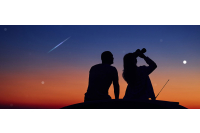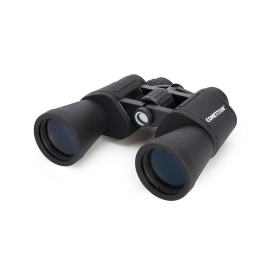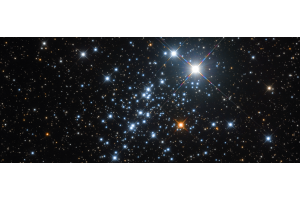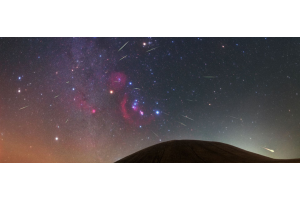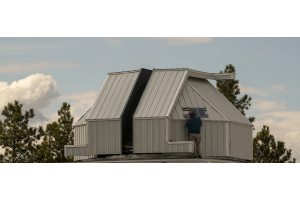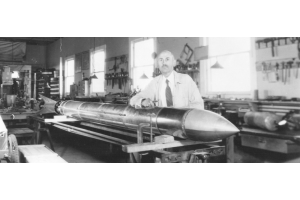
Setting up a telescope can take some time, especially if you’re in a hurry. Indeed, stargazing can be a very uncomfortable experience with the wrong gear. It can be hot, muggy, and the air filled with mosquitoes; or it can be frigid cold and your fingers go numb within minutes. But if you’re looking to quickly get out under the sky, a pair of binoculars is the best way to go. No setup is required. Simply glance through the binoculars, focus, and look up. Let's go over some of the best binoculars you can use for stargazing.
Benefits of Binoculars for Stargazing
- The lightweight design of binoculars enable extreme portability. You can bring binoculars practically anywhere.
- Binoculars collect an incredible amount of light. You are essentially looking through two telescopes at once. This results in brighter, better views than you would see through a single telescope of a similar aperture. In addition, the rich detail of the Milky Way will appear much brighter.
- Binoculars offer lower magnification than a telescope, offering much wider views of the night sky. You can fit entire constellations in your view!
Downsides of Binoculars for Stargazing
- Because of the way binoculars are designed, they are not ideal for viewing objects that require a lot of magnification. Planets and planetary nebulae would not be visible as anything more than faint points of light.
- Some binoculars use lower quality glass, which results in chromatic aberration and other distortions that are not easily corrected.
Best for Handheld Use
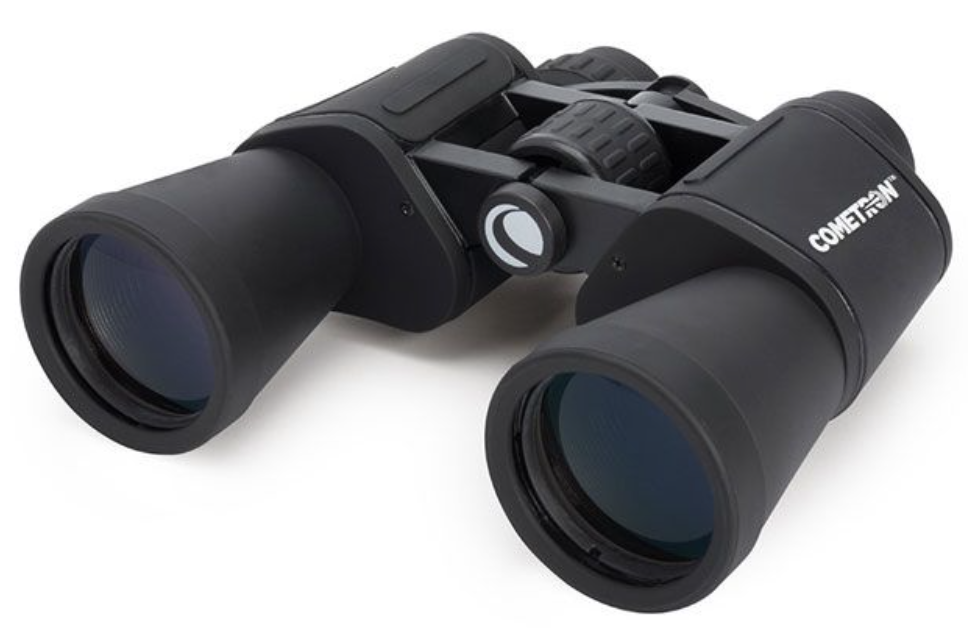
Celestron 7x50 Cometron Binoculars
Small, lightweight, and bringing in a decent amount of aperture, the Celestron 7x50 Cometron Binoculars are perfect for scanning the Milky Way. Thanks to having 50mm aperture, but only 7x magnification, you can view 7 degrees of the night sky at once! Passing through Sagittarius will show you almost all of the teapot, the Lagoon Nebula, and multiple globular clusters at a single glance. Looking into Orion, you’ll be able to see the Orion Nebula (M42), the three stars making up the belt of Orion, and the stars Rigel and Saiph all at once. Craters on the Moon and the Rings of Saturn may also be seen with these binoculars. These binoculars are an excellent choice for viewing comets, and will perform well when viewing in low-light conditions. Additionally, they weigh only 27 oz and can easily be stored in a backpack for camping.

Celestron Outland X 8x42 Binoculars
These binoculars offer many of the same benefits for stargazing as the Celestron Cometron, but weigh slightly less (22 oz vs 27 oz). With a 42mm aperture and 8x magnification, you will achieve a 6.8 degree field of view with these binoculars without a significant impact on what you can see vs a 50mm binocular. The optics are fully multicoated, enabling for great light transmission. Additionally, these binoculars are waterproof and fog proof, making them ideal for stargazing in high humidity or frosty situations. These binoculars can easily be used for other outdoor activities as well!
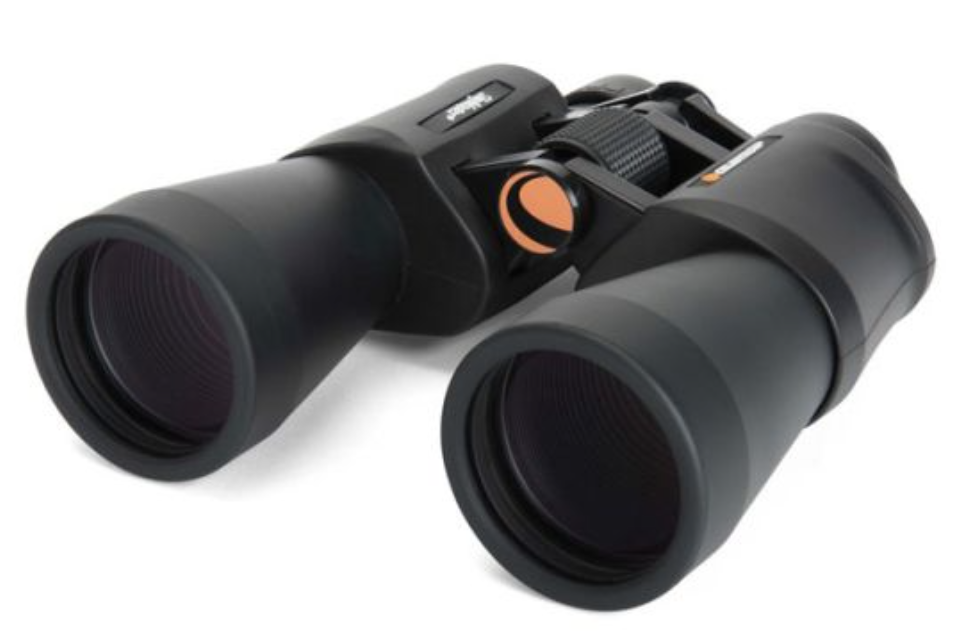
Celestron SkyMaster 8x56 Porro Prism Binoculars
With slightly more aperture than the Cometron binoculars, these binoculars are a phenomenal value for high-performance binoculars. The 56mm objectives make these binoculars ideal for astronomical viewing, bringing in slightly more light than the Celestron Cometron. These binoculars are “nitrogen purged”, which like the Outland X binoculars, means they are both waterproof and fog proof. While a little on the heavier side (38 oz), these binoculars can still be used for handheld stargazing. You may wish to consider purchasing additional accessories, such as a field harness, to aid your hand in keeping a steady view.
Best with a Tripod

Celestron SkyMaster 12x60 Binoculars
The next pair of binoculars on our list is the first that we highly recommend using a tripod with. Coming in at a weight of 2.45 lbs, it’s technically possible to use these binoculars with just your hand, but after an extended observing session you might find it difficult to keep up for much longer than a few minutes. The Celestron Binocular Tripod adapter is a great adapter to use when connecting your binoculars to a tripod. These binoculars offer 12x magnification vs the human eye, resulting in a 5.3 degree field of view. Panning through the Milky Way will yield a treasure trove of beautiful deep sky objects, and you’ll easily be able to spot the Andromeda Galaxy, Triangulum Galaxy, and other bright galaxies. These binoculars pack an impressive 60mm of aperture, comparable to a low-end refractor telescope.
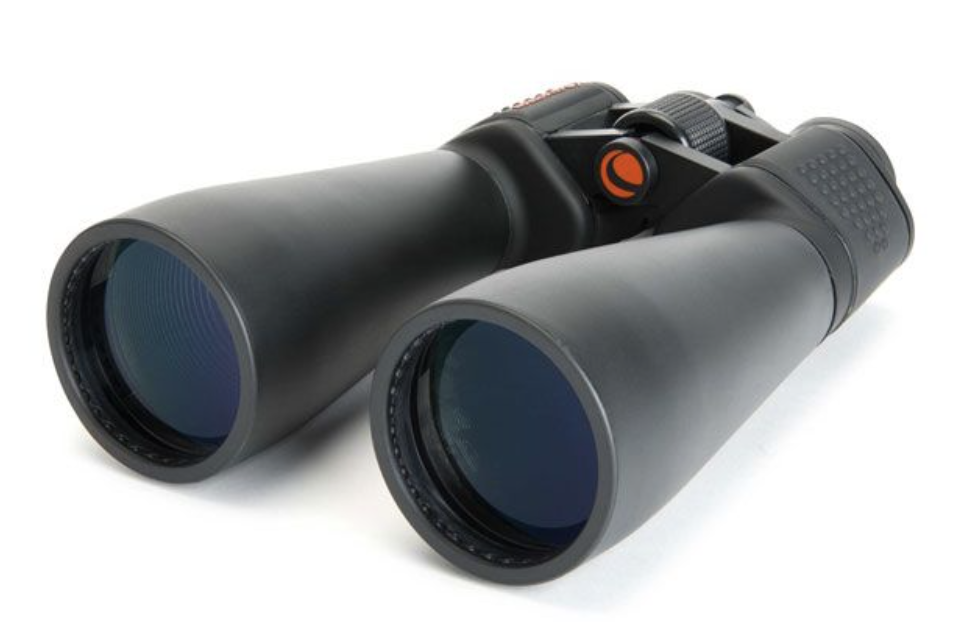
Celestron SkyMaster 15x70 Binoculars
Now we’re talking about some serious aperture. The two 70mm objectives result in a significant upgrade in terms of light-gathering capability. These binoculars are also water resistant, offer a 4.4 degree view of the sky, and weigh an impressive 48 oz. These large aperture binoculars are also a great choice for terrestrial use, especially over long distances. Celestron SkyMaster 15x70 binoculars feature high-quality BAK-4 prisms and have multi-coatings for enhanced contrast. These binoculars are so large, you nearly have to use a tripod for astronomy-related purposes. The views, however, will be out of this world. Globular clusters will appear in stunning relief. The Orion Nebula will be bright, with visible filaments and dust clouds. The Andromeda Galaxy will be clearly visible, along with the Triangulum Galaxy. Other galaxies, such as M81 and M82 should also be faintly visible.
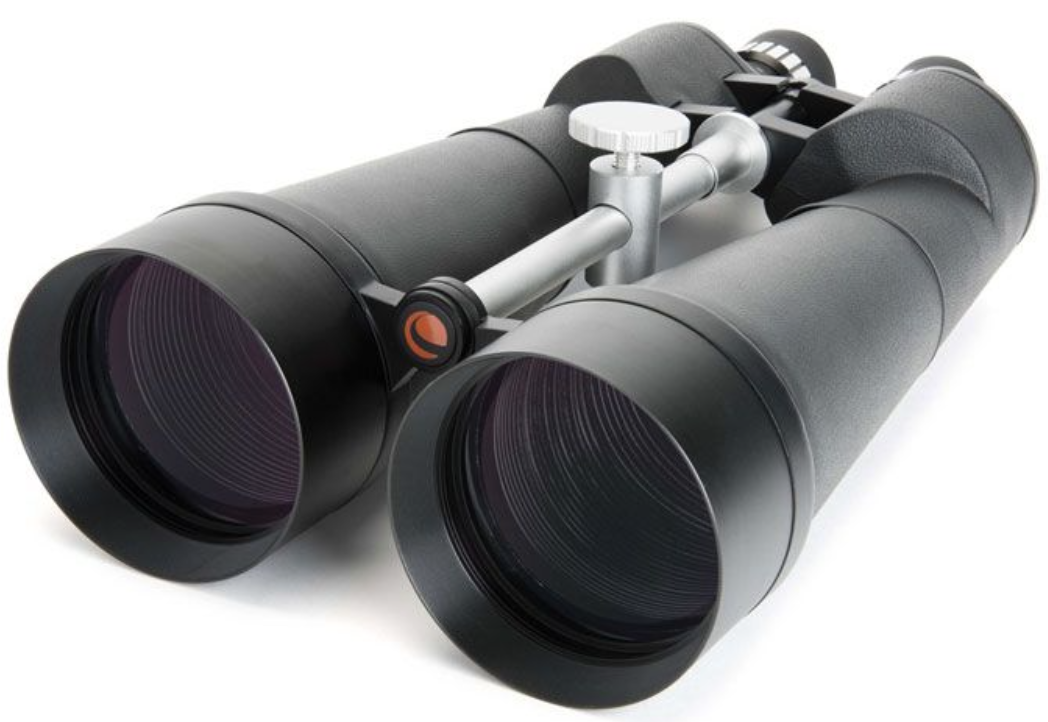
Celestron SkyMaster 25x100 Astronomy Binoculars
Now these binoculars are absolutely massive. With 100mm of aperture, this is a massive increase in light gathering capability over the 70mm and is one of the largest astronomy binoculars on the market. The 25x magnification offers a 3 degree field of view, which is still excellent for viewing deep sky objects like the Orion Nebula, Messier 31, and more. In fact, most of the objects in the Messier catalog should be visible through these binoculars. However, a tripod is again absolutely necessary to get a steady view of these objects. These Celestron Astronomy binoculars have a built-in super-rigid photo tripod adapter.
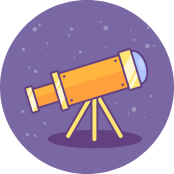
Learn More
Interested in learning more about binoculars and astronomy gear? Not sure where to begin? Check out our Astronomy Hub!
This Article was Last Updated on 07/20/2023





